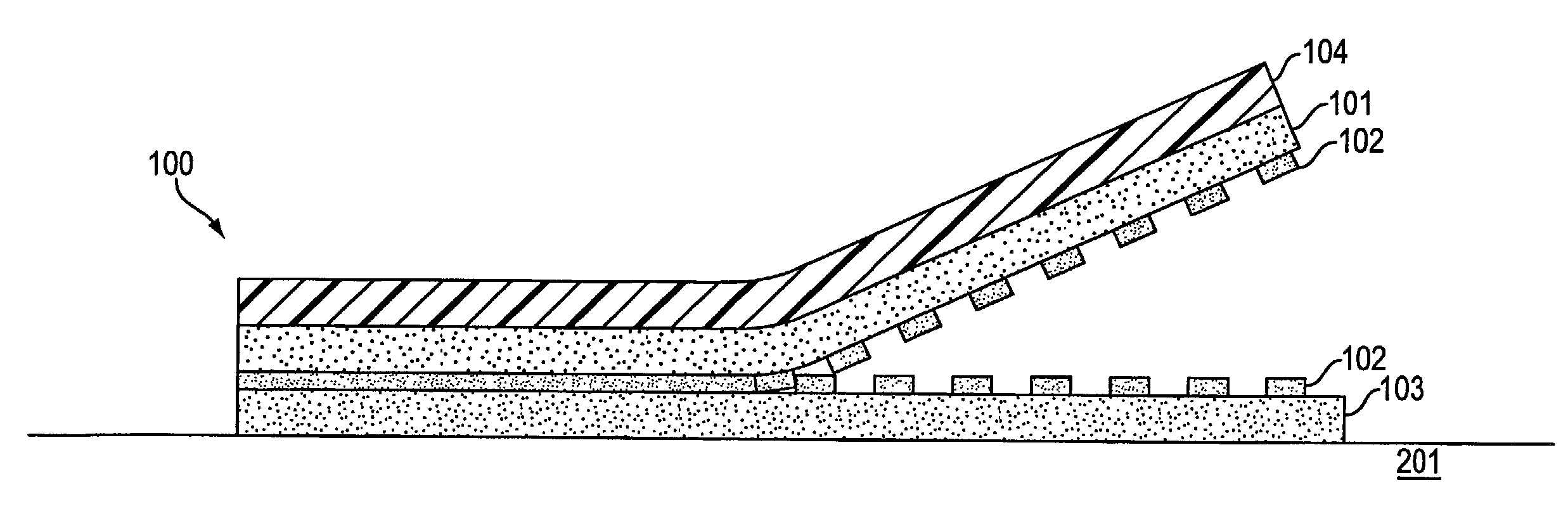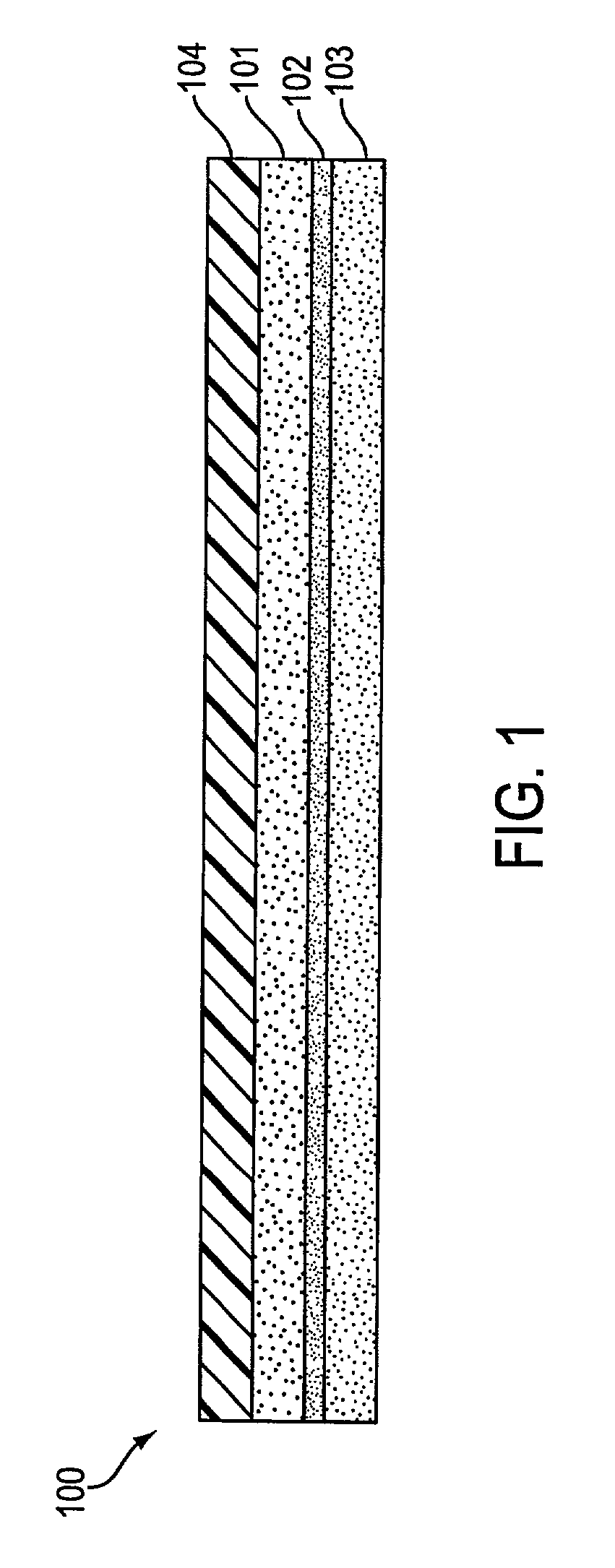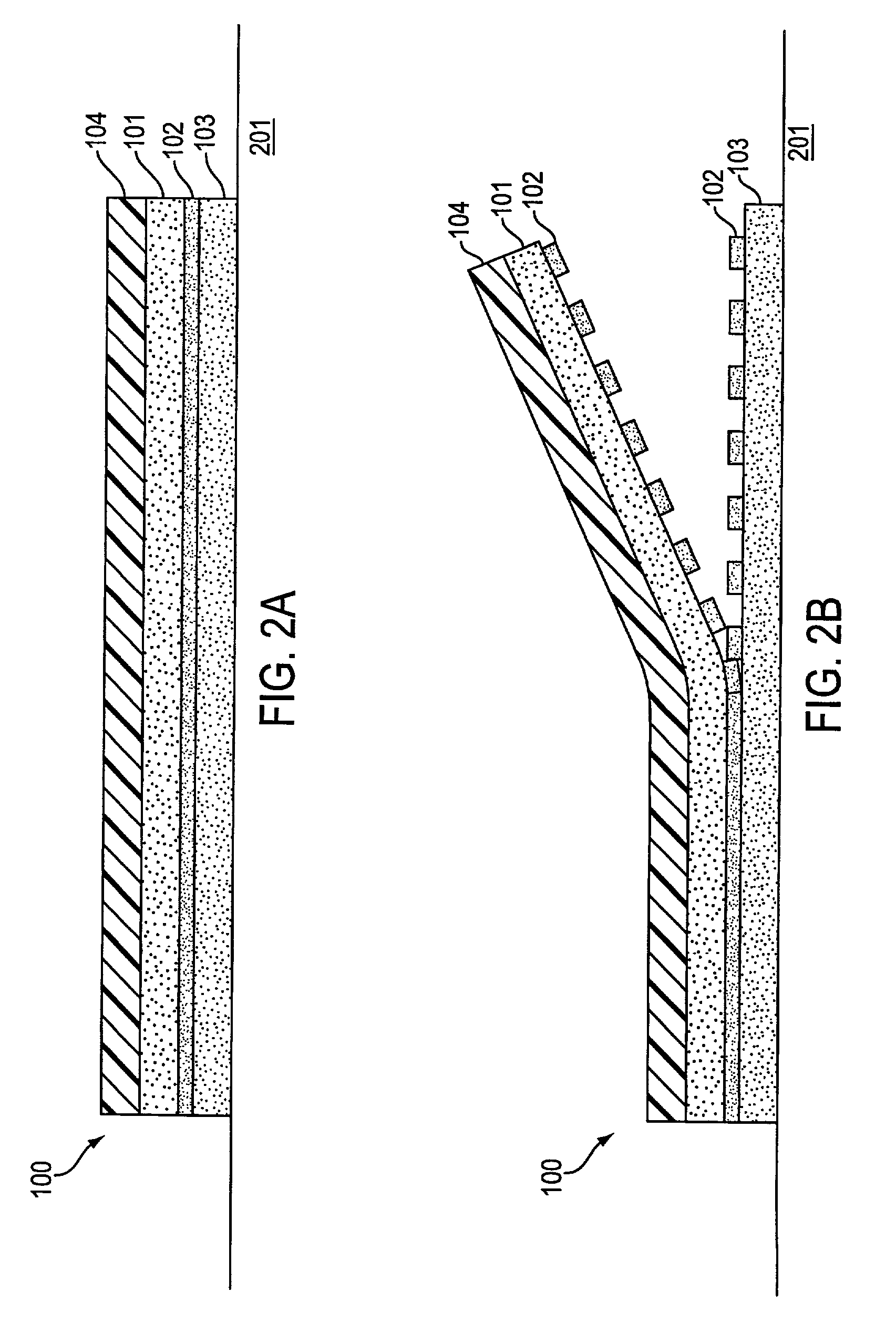Materials and construction for a tamper indicating radio frequency identification label
a radio frequency identification and material technology, applied in the field of materials and construction for tampering radio frequency identification labels, can solve problems such as not allowing remote determination
- Summary
- Abstract
- Description
- Claims
- Application Information
AI Technical Summary
Benefits of technology
Problems solved by technology
Method used
Image
Examples
example 1
Manufacture of the Coating
[0147]A coating was prepared using the following ingredients.
[0148]
TABLE 2Approx.ComponentWeight %Resin25.4Phenoxy Resin (Paphen ® PKHC)Diluent74.1(Di(ethylene glycol) ethyl ether acetate)Defoamer 0.1(BYK ® 075)Colorant 0.4(Phthalocyanine Blue 12% dispersion)Polytrend ® 850-7240
[0149]The phenoxy resin is dissolved in the solvent with stirring and heating to 50–60° C. The mixture is cooled to 25° C. and the defoamer and colorant added. The solution is further mixed to combine the ingredients.
example 2
Application of the Coating
[0150]The coating of example 1 was applied to 0.05 mm thick untreated polyethylene terephthalate film through a patterned 300 mesh stainless steel screen using standard screen printing technology.
[0151]The screen mesh was selected to produce a dry ink film thickness (DIFT) of between 3 and 7 microns, 4–5 microns being the typical DIFT. Stainless steel or polymer mesh screens are acceptable. The applied coating was cured in a conveyor oven at 120° C. for 60 seconds.
[0152]Alternatively, in the case of a radiation cured formula a subtractive technique can be used. These formulas are commonly referred to as photo imagable wherein the coating is applied as a solid continuous layer. This layer is then exposed to the radiation through a mask or phototool containing the desired pattern. The areas of the coating where the radiation is not blocked by the mask are cured and remain intact. The areas of the coating where the radiation is blocked remain uncured and are s...
PUM
 Login to View More
Login to View More Abstract
Description
Claims
Application Information
 Login to View More
Login to View More - R&D
- Intellectual Property
- Life Sciences
- Materials
- Tech Scout
- Unparalleled Data Quality
- Higher Quality Content
- 60% Fewer Hallucinations
Browse by: Latest US Patents, China's latest patents, Technical Efficacy Thesaurus, Application Domain, Technology Topic, Popular Technical Reports.
© 2025 PatSnap. All rights reserved.Legal|Privacy policy|Modern Slavery Act Transparency Statement|Sitemap|About US| Contact US: help@patsnap.com



